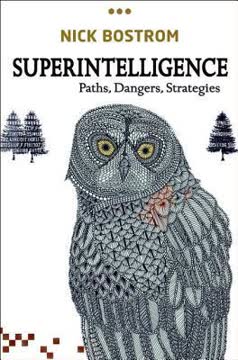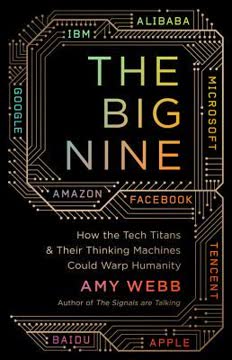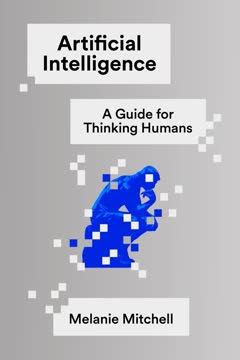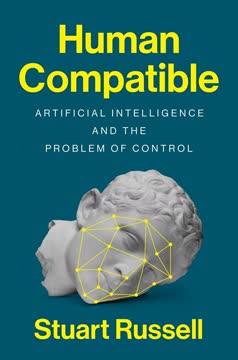نکات کلیدی
1. چهار موج هوش مصنوعی: تغییر صنایع و جوامع
انقلاب کامل هوش مصنوعی کمی زمان میبرد و در نهایت در قالب چهار موج بر ما غلبه خواهد کرد: هوش مصنوعی اینترنت، هوش مصنوعی کسبوکار، هوش مصنوعی ادراک و هوش مصنوعی خودمختار.
هوش مصنوعی اینترنت هماکنون اینجاست و تجربیات دیجیتال ما را از طریق موتورهای توصیه و محتوای شخصیسازیشده تغییر میدهد. هوش مصنوعی کسبوکار با استخراج دادههای وسیع، تصمیمگیریهای شرکتی را بهینهسازی میکند. هوش مصنوعی ادراک دنیای فیزیکی ما را دیجیتالی کرده و به ماشینها امکان میدهد ما را ببینند، بشنوند و درک کنند. هوش مصنوعی خودمختار که هنوز در حال توسعه است، وعده میدهد که حملونقل و تولید را متحول کند.
این امواج مجزا نیستند؛ بلکه با هم همپوشانی دارند و یکدیگر را تقویت میکنند:
- هوش مصنوعی اینترنت: قدرتدهی به پلتفرمهایی مانند گوگل، فیسبوک و توتیائو
- هوش مصنوعی کسبوکار: بهبود خدمات مالی، تشخیصهای بهداشتی و تحلیلهای حقوقی
- هوش مصنوعی ادراک: پیشبرد نوآوریها در خردهفروشی، اتوماسیون خانگی و مدیریت شهری
- هوش مصنوعی خودمختار: تحول صنایع از طریق خودروهای خودران، پهپادها و رباتیک
2. چین و آمریکا: ابرقدرتهای هوش مصنوعی در جنگ سرد فناوری
این کسبوکارها و دانشمندان با هم چین را به یک ابرقدرت واقعی هوش مصنوعی تبدیل کردهاند، تنها وزنهی ملی واقعی در برابر ایالات متحده در این فناوری نوظهور.
تفاوتهای قدرت. آمریکا در تحقیقات پیشرفته هوش مصنوعی پیشرو است و استعدادهای جهانی را جذب میکند، در حالی که چین در اجرای هوش مصنوعی و جمعآوری دادهها برتری دارد. مزایای چین شامل:
- پایگاه کاربری عظیم که دادههای ارزشمندی تولید میکند
- حمایت و تأمین مالی دولت برای ابتکارات هوش مصنوعی
- اکوسیستم کارآفرینان سرسخت و قابلیتهای تولیدی قوی
پتانسیل همکاری. با وجود لفاظیهای رقابتی، توسعه هوش مصنوعی یک بازی با جمع صفر نیست. هر دو کشور میتوانند به پیشرفت جهانی هوش مصنوعی کمک کنند:
- آمریکا: پیشگام در تحقیقات بنیادی هوش مصنوعی و پرورش نوآوری
- چین: اجرای سریع راهحلهای هوش مصنوعی و مقیاسگذاری کاربردها
- پتانسیل همکاریهای فرامرزی برای مقابله با چالشهای جهانی
3. جابجایی شغلی: بحران واقعی هوش مصنوعی در افق
در عرض ده تا بیست سال، برآورد میکنم که ما از نظر فنی قادر خواهیم بود 40 تا 50 درصد از مشاغل در ایالات متحده را خودکار کنیم.
تأثیر گسترده. خودکارسازی مبتنی بر هوش مصنوعی بر مشاغل در سراسر طیف، از مشاغل یقهآبی تا یقهسفید تأثیر خواهد گذاشت:
- وظایف شناختی روتین (مانند تحلیل داده، نوشتن پایه) به راحتی خودکار میشوند
- مشاغل فیزیکی که نیاز به مهارت و تطبیقپذیری دارند در کوتاهمدت مقاومتر هستند
- نقشهای خلاقانه و دارای هوش احساسی کمتر در معرض جابجایی فوری قرار دارند
پیامدهای اقتصادی:
- افزایش نابرابری درآمدی با تمرکز ثروت توسط هوش مصنوعی
- پتانسیل بیکاری فناوری در مقیاسی بیسابقه
- فرسایش طبقه متوسط و بیثباتی اجتماعی
4. فراتر از الگوریتمها: اهمیت عشق و همدلی انسانی
با وجود تمام قابلیتهای شگفتانگیز هوش مصنوعی، تنها چیزی که انسانها میتوانند ارائه دهند و دقیقاً همان چیزی است که در زندگی ما بیشترین نیاز را دارد: عشق.
محدودیتهای هوش مصنوعی. با وجود توانایی شناختی، هوش مصنوعی فاقد هوش احساسی و ظرفیت برای ارتباط واقعی انسانی است. این افشاگری از طریق یک بحران شخصی به نویسنده رسید:
- تشخیص سرطان باعث بازنگری در اولویتهای زندگی شد
- شناخت ارزش غیرقابل جایگزین روابط انسانی و همدلی
بازتعریف ارزش انسانی. با تسلط هوش مصنوعی بر بسیاری از وظایف شغلی سنتی، باید تمرکز خود را تغییر دهیم:
- از بهرهوری و خروجی اقتصادی به همدلی و هوش احساسی
- پذیرش ویژگیهای منحصربهفرد انسانی که هوش مصنوعی نمیتواند تکرار کند
- پرورش جامعهای که به مراقبت، خلاقیت و ارتباطات بینفردی ارزش میدهد
5. بازتعریف کار: پذیرش همزیستی انسان و هوش مصنوعی
اگر بتوانیم این همافزایی را ایجاد کنیم، به ما اجازه میدهد تا از قدرت غیرقابل انکار هوش مصنوعی برای ایجاد رفاه استفاده کنیم و در عین حال انسانیت اساسی خود را بپذیریم.
مدل همکاری. آینده کار در مشارکتهای انسان و هوش مصنوعی نهفته است، نه رقابت:
- هوش مصنوعی وظایف روتین و مبتنی بر داده را انجام میدهد
- انسانها بر همدلی، خلاقیت و حل مسائل پیچیده تمرکز میکنند
فرصتهای نوظهور:
- بهداشت و درمان: تشخیصهای مبتنی بر هوش مصنوعی همراه با مراقبان دلسوز
- آموزش: ابزارهای یادگیری شخصیسازیشده هوش مصنوعی تکمیلشده توسط معلمان انسانی همدل
- خدمات مشتری: هوش مصنوعی پاسخگویی به پرسشها، انسانها ارائه حمایت احساسی
تغییر فرهنگی مورد نیاز:
- فراتر رفتن از دیدن انسانها به عنوان واحدهای اقتصادی صرف
- ارزشگذاری و پاداشدهی به هوش اجتماعی و احساسی
- پرورش یادگیری مادامالعمر و تطبیقپذیری در نیروی کار
6. کمکهزینه سرمایهگذاری اجتماعی: قرارداد اجتماعی جدید برای عصر هوش مصنوعی
پیشنهاد میکنم به جای UBI، چیزی را که من آن را کمکهزینه سرمایهگذاری اجتماعی مینامم، بررسی کنیم.
فراتر از UBI. نویسنده رویکردی دقیقتر برای مقابله با جابجایی شغلی ناشی از هوش مصنوعی پیشنهاد میکند:
- حقوق دولتی برای فعالیتهای اجتماعی مفید
- تمرکز بر کارهای مراقبتی، خدمات اجتماعی و آموزش
- پاداشدهی به رفتارهای اجتماعی در حالی که امنیت اقتصادی را فراهم میکند
چالشهای اجرایی:
- تعریف فعالیتهای واجد شرایط و معیارهای عملکرد
- تعادل بین آزادی انتخاب و منفعت اجتماعی
- تأمین مالی از طریق مالیات بر ثروت تولیدشده توسط هوش مصنوعی
مزایای بالقوه:
- حفظ کرامت انسانی و حس هدف
- پرورش جامعهای دلسوزتر و به هم پیوستهتر
- فراهم کردن ثبات اقتصادی در حالی که به مشارکت اجتماعی تشویق میکند
7. همکاری جهانی: بهرهگیری از خرد متنوع برای آیندهای با هوش مصنوعی
هیچ کشوری به تنهایی پاسخ همه مسائل پیچیدهای که با آنها مواجهیم را نخواهد داشت، اما اگر از منابع متنوع خرد بهره بگیریم، معتقدم هیچ مشکلی نیست که نتوانیم با هم حل کنیم.
دیدگاههای متنوع. فرهنگها و جوامع مختلف بینشهای منحصربهفردی برای پیمایش انقلاب هوش مصنوعی ارائه میدهند:
- کره جنوبی: برنامههای آموزشی استعداد برای پرورش استعدادهای برتر
- سوئیس و ژاپن: فرهنگ صنعتگری که به هنر انسانی ارزش میدهد
- کانادا و هلند: سنتهای قوی داوطلبی
- بوتان: معیارهای جایگزین پیشرفت مانند خوشبختی ملی ناخالص
آزمایش سیاست. کشورها رویکردهای متنوعی به حاکمیت هوش مصنوعی اتخاذ میکنند:
- اروپا: اقدامات سختگیرانه حفاظت از داده و ضد انحصار
- آمریکا و چین: رویکرد آزادتر برای پرورش نوآوری
- فرصت یادگیری از چارچوبهای نظارتی متنوع
ضرورت همکاری. ماهیت جهانی تأثیر هوش مصنوعی نیازمند همکاری بینالمللی است:
- به اشتراکگذاری بهترین شیوهها در آموزش و توسعه نیروی کار
- هماهنگی در توسعه و استقرار اخلاقی هوش مصنوعی
- مقابله با چالشهای مشترک مانند جابجایی شغلی و نابرابری
عامل انسانی در شکلدهی آینده هوش مصنوعی ما حیاتی است. با پذیرش دیدگاههای متنوع و پرورش همکاری جهانی، میتوانیم از پتانسیل هوش مصنوعی بهرهبرداری کنیم و در عین حال انسانیت خود را حفظ کنیم.
آخرین بهروزرسانی::
FAQ
What's AI Superpowers about?
- AI Competition: AI Superpowers by Kai-Fu Lee examines the intense competition between the United States and China in the realm of artificial intelligence, highlighting each country's unique strengths.
- Societal Impact: The book explores the profound implications of AI on jobs, the economy, and global power dynamics, discussing both potential benefits and challenges.
- Personal Insights: Lee shares his experiences as an AI researcher and venture capitalist, offering a personal perspective on the evolution of AI technologies and their societal impacts.
Why should I read AI Superpowers?
- Global Dynamics: The book is crucial for understanding the future of technology and its geopolitical implications, particularly how AI will influence global power structures.
- Informed Predictions: Lee provides insights into how AI will transform various industries and job markets, helping readers prepare for upcoming changes.
- Cultural Perspectives: It contrasts the entrepreneurial cultures of Silicon Valley and China, offering a deeper understanding of how these environments foster innovation.
What are the key takeaways of AI Superpowers?
- Transformative Force: AI is not just a technological advancement but a transformative force that will redefine economies and societies.
- China's Progress: China has rapidly caught up to the U.S. in AI, driven by government support, vast data resources, and a competitive entrepreneurial environment.
- Human-AI Collaboration: Lee advocates for a future where humans and AI coexist, focusing on enhancing human capabilities rather than replacing them.
What are the best quotes from AI Superpowers and what do they mean?
- "We’re all full of questions without answers.": This quote reflects the uncertainty surrounding AI's future and the need for societal discussions about its implications.
- "AlphaGo’s victories were both a challenge and an inspiration.": It highlights how technological advancements can spur nations to innovate and compete, especially in AI.
- "Our AI future will be created by us.": Lee emphasizes human agency in shaping AI's future, suggesting that our choices will determine its societal impact.
How does Kai-Fu Lee define AI superpowers in AI Superpowers?
- Superpowers Definition: AI superpowers are nations that effectively harness AI technologies to drive economic growth and influence global affairs.
- China vs. U.S.: While the U.S. has historically led in AI research, China is emerging as a formidable competitor due to its unique advantages.
- Data Importance: Data is a critical resource for AI development, and countries with vast data access will have a significant edge.
What are the four waves of AI discussed in AI Superpowers?
- Internet AI: Enhances online experiences with applications like recommendation algorithms used by companies such as Alibaba and Google.
- Business AI: Optimizes traditional business processes, improving efficiency in sectors like finance and healthcare.
- Perception AI: Interprets sensory data, enabling applications like facial recognition and autonomous vehicles.
- Autonomous AI: Encompasses fully autonomous systems, such as self-driving cars and drones, with profound industry implications.
How does AI Superpowers address the potential job displacement caused by AI?
- Job Loss Predictions: Lee predicts AI could replace 40-50% of jobs in the U.S. within the next 15 years, affecting both low-skill and high-skill positions.
- Historical Context: The book draws parallels to past technological revolutions, suggesting society has historically adapted to such changes.
- Need for Adaptation: Emphasizes the importance of education and policy adjustments to ensure workers can transition into new roles.
What is the significance of the "Sputnik Moment" in the context of AI in AI Superpowers?
- Cultural Awakening: The term describes how AlphaGo's victory ignited a national obsession with AI in China, similar to the U.S. response to the Soviet satellite launch.
- Government Mobilization: Led to significant government investment and policy initiatives aimed at making China a global AI leader.
- Inspiration for Innovation: Served as a wake-up call for Chinese entrepreneurs and researchers, motivating aggressive AI advancements.
How does AI Superpowers compare the U.S. and China in terms of AI development?
- Different Approaches: The U.S. focuses on innovation and individualism, while China emphasizes rapid implementation and government support for AI initiatives.
- Cultural Factors: Cultural attitudes towards technology, data privacy, and government intervention influence AI progress in each country.
- Future Predictions: Lee predicts China may surpass the U.S. in AI implementation due to its advantages in hardware manufacturing and data availability.
What role does data play in AI development according to AI Superpowers?
- Data as a Resource: Data is the most critical resource for AI development, surpassing even computing power and talent.
- China's Advantage: China's vast population and digital ecosystem generate enormous data amounts, giving Chinese companies a significant edge in training AI algorithms.
- Quality of Data: Not only quantity but also the quality of data—how it reflects real-world behaviors and preferences—is crucial for effective AI applications.
What is the proposed social investment stipend in AI Superpowers?
- Definition and Purpose: A proposed government salary for individuals engaging in socially beneficial activities, such as care work and community service.
- Contrast with UBI: Unlike universal basic income, the stipend requires participation in meaningful activities, fostering community and purpose.
- Cultural Shift: Encourages valuing human connections and compassion over solely economic productivity, aiming for a more humane society in the AI age.
How does AI Superpowers envision the future of work?
- Human-Machine Collaboration: Envisions a future where humans and AI work together, with machines handling routine tasks while humans provide emotional and creative input.
- Emergence of New Professions: Predicts new roles prioritizing human interaction and empathy, essential in an AI-dominated world.
- Cultural Shift in Values: Requires valuing care, service, and education as essential societal components, redefining success and fulfillment beyond traditional economic metrics.
نقد و بررسی
کتاب قدرتهای ابرهوش مصنوعی نگاهی جامع به رقابت هوش مصنوعی بین چین و ایالات متحده ارائه میدهد و تأثیر آن بر مشاغل، اقتصاد و جامعه را بررسی میکند. خوانندگان دیدگاه متعادل لی و دانش او از صحنههای فناوری هر دو کشور را تحسین میکنند. در حالی که برخی از خوانندگان داستانهای شخصی را حواسپرتکننده میدانند، بسیاری از بینشهای نویسنده درباره مزایا و خطرات بالقوه هوش مصنوعی قدردانی میکنند. این کتاب به دلیل دسترسیپذیری برای غیرمتخصصان و ایدههای تحریککنندهاش درباره سازگاری با آیندهای که توسط هوش مصنوعی هدایت میشود، مورد ستایش قرار گرفته است.
Similar Books















